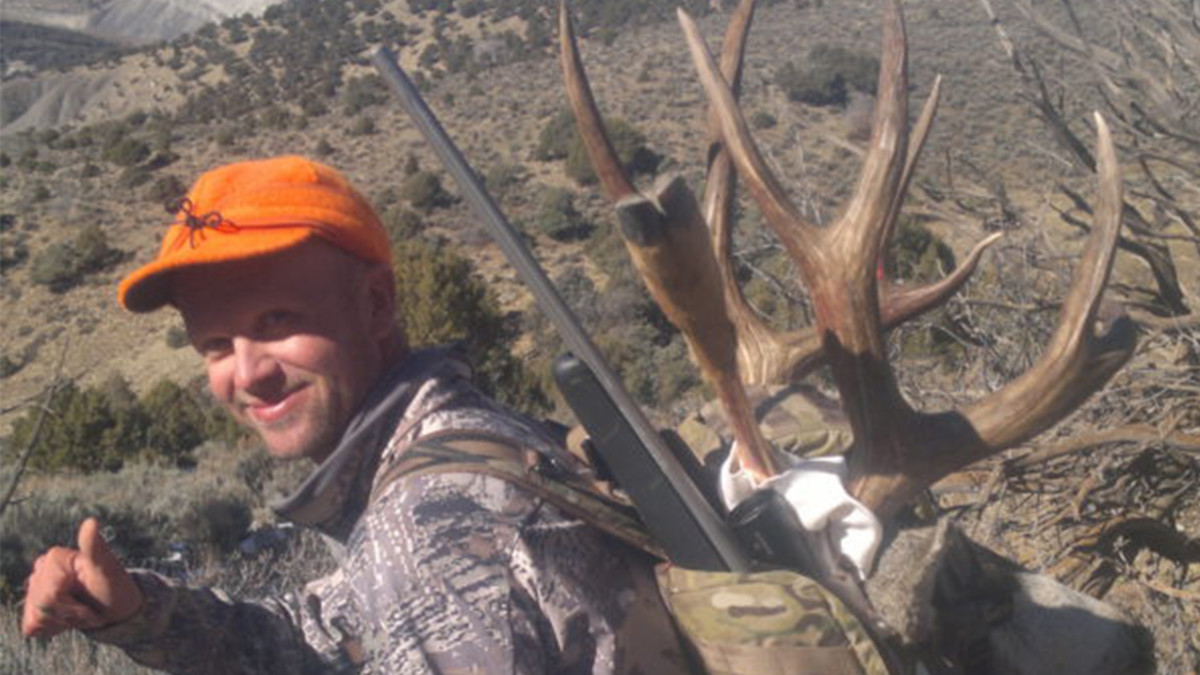
I’m fortunate to live in the epicenter of the country’s best mule deer hunting. Central Colorado has high numbers of my favorite big game animal and has long been known for producing trophy quality bucks that, despite some misinformed detractors, are very good table fare.
Colorado has the perfect blend of productive alpine summer range, large aspen groves, and sage-covered winter range. More than any other factor as a do-it-yourself public land hunter, I believe consistently scoring on a nice mule deer buck depends on your ability to find productive habitat.
Big Buck Habitat
The mule deer’s predictable annual migration is my key to finding large bucks. Summer finds them in the alpine high country where food is plentiful. During fall, as snow begins piling up, does lead their fawns downhill through transitional habitat to find more accessible food sources, ultimately reaching flatter sage-covered wintering areas.
Mature bucks take the same downward path as the does, driven along by their breeding urge. These bucks generally lag behind the does and young bucks by a matter of days or weeks. At the time of year when I like to hunt, Colorado’s third rifle season, in early November, I target these bucks by anticipating where they’ll ultimately be headed and then trying to find them along their migration corridors.
Because I don’t use four wheelers or horses, and I don’t have access to private ranches, I work hard to hunt areas that are underutilized by other hunters. Most publicly owned BLM or National Forest land is easily identified on a map, so I look for parcels without roads that have impediments to reaching them. Many hunters drive past plenty of sweet country that they never hunt because it demands a long trek around private land or perhaps a short wade or paddle across a river.
Once I’m in some country that I know will hold deer, finding them just requires a little time. At first, locating a solitary big buck may seem daunting since mule deer move a lot throughout the fall, and their preferred hangouts are constantly changing. For this reason, I don’t spend a lot of time scouting much more than a week prior to my mule deer hunt. It simply doesn’t do a hunter much good to pinpoint a buck three weeks before the season when he’ll be in a completely different location on opening day.
Due to changing food sources or heavy snow, deer may move down to a completely different habitat during the season. It can happen fast, overnight in some cases and a smart hunter needs to react accordingly.
Good Hunting Strategy
In general, a good hunting strategy is to start higher than you expect to find deer and then work your way downhill until you begin to see a few does, knowing full well the bucks are nearby. I usually start the season by glassing south facing aspen slopes but each year may find me eventually concentrating on a different habitat type that the deer are traveling through.
For me, it’s helpful to think of my hunting area as having zones. The lowest zone is comprised of the sagebrush flats where deer spend the severest part of the winter. Above that you have the travel corridors, transitional oak brush, aspen, timber and alpine zones.
One of my favorite types of terrain for late fall hunting are transitional zones found between the sagebrush wintering grounds and higher elevation aspen groves. I seek out open feeding areas adjacent to thick bedding spots where shade lingers and deer stay on their feet later in the morning. Mule deer seem to gravitate towards shade. Once I’m dialed in and seeing good numbers of deer, I give an area plenty of time even if a mature buck hasn’t appeared yet.
If I find a lot of does and young bucks in a particular zone, I’ll look a little bit higher up for larger bucks, dissecting the terrain carefully with optics. From there, it may simply be a matter of waiting for a big buck to move in or better yet, he might already be there. Last season, I glassed a group of ten does off and on all morning before I spotted a large buck that had been with them the whole time. I quickly planned my stalk based on wind direction and terrain, closed to within reasonable shooting range and took my largest mule deer buck ever.
For someone hunting mule deer during the early fall in Wyoming or mid-fall in Montana, the situation might be completely different. However, the seasonal migrations of mule deer are pretty similar throughout their range, so mule deer bucks become easier to find if hunters understand the different habitat types in their hunting area and apply that knowledge to the time of year the hunt will take place.
Loss of Mule Deer Habitat
Speaking of mule deer habitat, people who love to hunt mule deer should understand that we are losing it an astonishing pace. The loss of wintering range, in particular, is probably the biggest single problem facing mule deer in the Rocky Mountains. We are losing sagebrush terrain thanks to fire suppression, this allows the encroachment of pinyon and juniper into sagebrush habitat, and we are losing it to energy, residential, and commercial development.
To help mule deer and other western wildlife, hunters need to become involved. For example, throughout the West, there are plenty of volunteer opportunities for hunters looking to join a habitat improvement project that will result in better mule hunting for everyone. If we put a little effort into supporting conservation groups like the Mule Deer Foundation, big ol’ mule deer bucks can continue to challenge hunters throughout their range.






